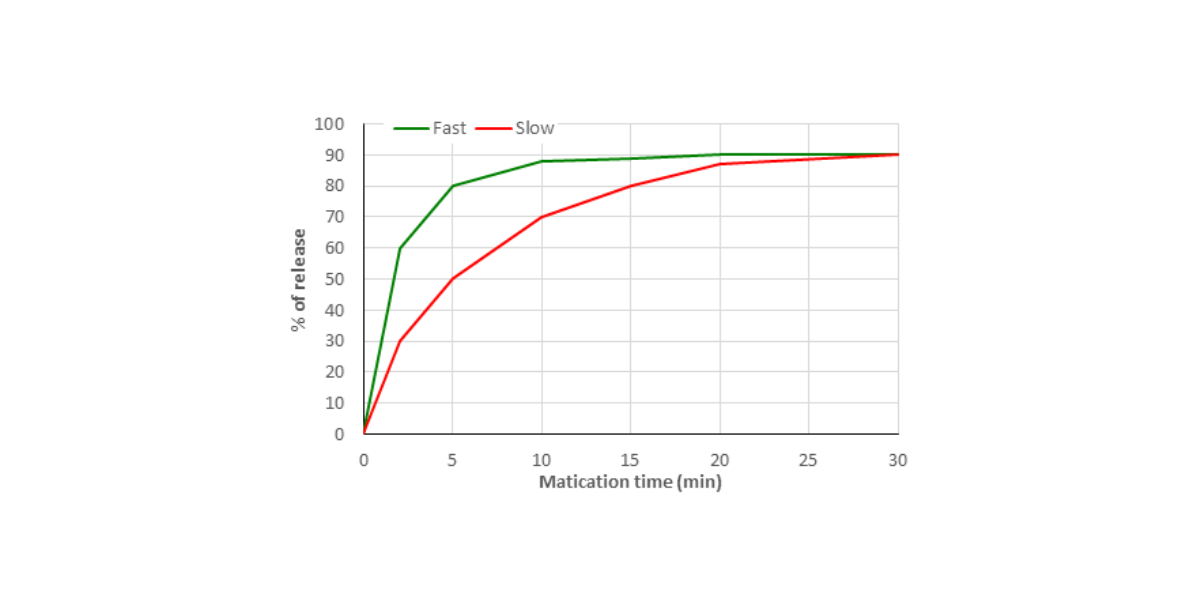Consumers are increasingly aware of the benefits of living healthier lifestyles and are taking a more proactive approach to health: prevention rather than treatment will become the norm in the near future across generations. This holistic approach to health, combined with pill fatigue is opening new opportunities for functional food and beverage, as people are seeking to include products in their diets that deliver benefits beyond just their nutritional value. In confectionery we have seen many new product launches over the past couple of years of products with active ingredients such as gummies with vitamins and probiotics or chocolate with CBD.
Functional chewing gum
In the current context, we believe functional chewing gum with different active ingredients has a huge potential of becoming a preferred delivery system for consumers looking for health benefits. Gum can be an effective delivery system, as it is enjoyable as well as easy to carry around and consume.
Functional gum follows the traditional formulation of ‘regular’ chewing gum: gum base, sweeteners and flavors, while adding the active ingredients (API) of choice. However, we believe it is important for the product to deliver on its promise, meaning that the active ingredient be liberated from the chewing gum while chewing, ensuring the sought after effect. For this, it is very important to determine not only the API content but, more importantly, API release from the gum.
API release
Many factors affect API release, from the gum base used in the formulation to the API solubility itself. Basically, every API has a different behavior when included into a gum formulation but thankfully there are some rules that allow us to foresee if a certain API will likely release or not.
To understand API behavior, we need to understand gum base. This is a mixture of elastomers, resins, waxes and fillers that yields a hydrophobic substance. Gum base is the remaining part of a gum at the end of the chewing period and it defines the chewing profile and characteristics of the gum from its elasticity to the capacity of blowing bubbles. This means that water soluble ingredients are solubilized during mastication and swallowed together with the saliva.
Knowing that gum base is highly hydrophobic we can split API into two large categories:
Lipophilic
Insoluble in water – are APIs that have a very high probability of getting ‘trapped’ inside the gum base matrix and present no or marginal release.
Hydrophilic
Soluble in water – these APIs have a very high chance of releasing successfully from a gum.
This is a general rule of thumb that allows us to perform an initial API selection, but we still need to determine the release profile from a gum.

Measuring the release rate from a manufactured gum allows us to confirm if the API gets released , the % released from the total API content, and its release rate. Most APIs do not release 100%, which means it will be necessary to ‘overdose’ the active ingredient in the gum formula to release the desired quantity. Another point o take into account is that certain APIs present fast release rates, which may translate into unwanted flavors or unwanted effects such as a burning sensation in the case of nicotine.

Measuring API release
To measure API release there are mainly two options:
In-vivo
Having people masticate the gum a certain period of time and analyze the remaining API in the chewed piece of gum. This option is very slow and with certain APIs it is not viable due to health risks.
In-vitro
In-vitro analysis, as described in the European Pharmacopeia monograph 2.9.25, using an automatic masticator (see below) and artificial saliva. This method presents many advantages since it is completely repeatable as the apparatus does not tire and uses a constant mastication speed and saliva with a fixed composition.

CAFOSA capabilities
At CAFOSA we think it is of paramount importance to completely develop functional gums, including the release curve of the active ingredients. For this reason, we prepared our lab with an automatic masticator from AB FIA and we are able to perform extractions on gum in a repeatable fashion.
We offer a complete solution including extractions and analysis of active ingredients in collaboration with local laboratories. Alternatively we can send the extracted fractions for analysis at the customer’s site.

